- Photo
feature tracks route of Indus River in U.T. of Ladakh-India, Gilgit and
Pakistan.
Ever
since the Indus Water Treaty was kept in abeyance Water of Northern Rivers has
occupied media space in India.
Earlier
eSamskriti shared two articles on water - Suspension of Indus Water Treaty and Decoding India Bangladesh Ganga Water Treaty.
First
response to some public statements followed by route of Indus River in Ladakh,
Gilgit and Pakistan.
Chief Minister of the Union Territory of Jammu and Kashmir, in a June 2025 interview, opposed a proposal to divert surplus water from three Western rivers of the Indus system to Punjab. “He was responding to a question regarding a 113-km canal proposed for redirecting surplus water from the three rivers of the Indus System in Jammu and Kashmir-Indus, Jhelum, and Chenab-to Punjab, Haryana, and Rajasthan. New Indian Express The deeper intent being to prevent
water from flowing to Pakistan. Tribune Chandigarh
The
Punjab CM wants water from Chenab and
Jhelum in J&K to be diverted to Punjab as a solution to the SY Canal issue
with Haryana. Smart suggestion because it skirts the idea that Punjab, to meet
its needs, should focus on stopping flowing of surplus waters of Sutlej and
Beas (source Himachal) to Pakistan instead of waiting for Chenab water diversion.
Read Ideas for Punjab Note Bhakra Dam was
a joint-venture between undivided Punjab and Rajasthan.
All need to
realize that only 2 of 3 western rivers covered by the Indus Water Treaty flow
through the U.T. of J&K. They are Chenab and Jhelum. Indus flows through the
U.T. of Ladakh over which Abdullah has little control.
It
has thus become imperative to understand the flow of river Indus in Ladakh.
1. The Indus originates from Tibet, near Mount Kailash, entering India at Demchok in Changthang Valley. Archana S wrote, “The Indus River was a tiny stream here. It then mystically transforms into a mighty river that has been the bed of mighty civilizations.” 1 Historically
Demchok used to link Tibet through the Indus route. 8 “Near Dungti, the river takes a southwest turn, cutting through the Ladakh range” i.e. it move towards Leh.
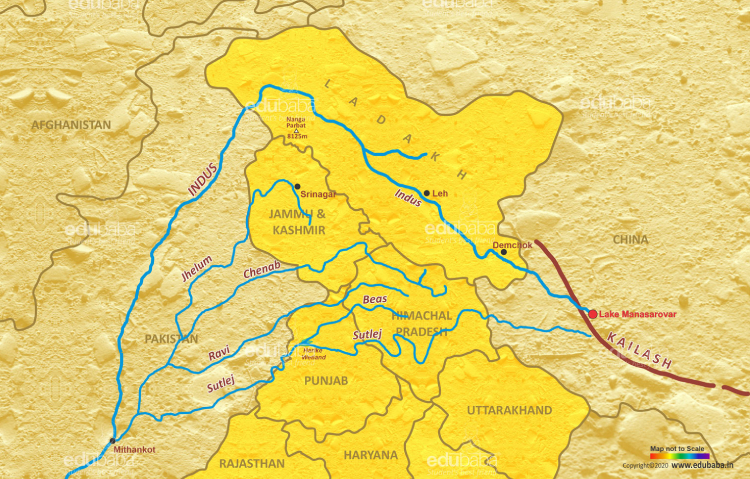 Map shows flow of Indus from Tibet to Pakistan through Gilgit, Baltistan. All maps not to scale. We are not responsible for map showing boundaries correctly.
Map shows flow of Indus from Tibet to Pakistan through Gilgit, Baltistan. All maps not to scale. We are not responsible for map showing boundaries correctly.
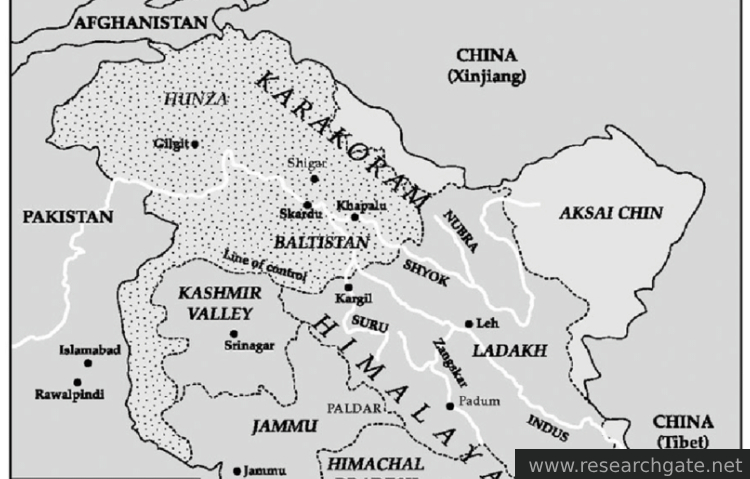 Map shows flow of Indus from Tibet through Ladakh to Pakistan clearly.
Map shows flow of Indus from Tibet through Ladakh to Pakistan clearly.
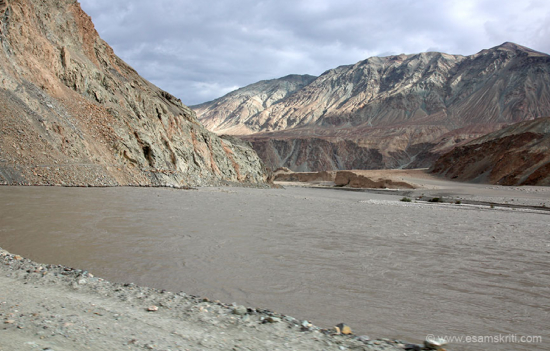 Indus enroute from
Nubra Valley to Changla Pass. Had to take a detour due to landslide, hence used
road by the river. 2016.
Indus enroute from
Nubra Valley to Changla Pass. Had to take a detour due to landslide, hence used
road by the river. 2016.
2.
It flows through Leh and merges with Zanskar at Nimu i.e. ahead of Leh.
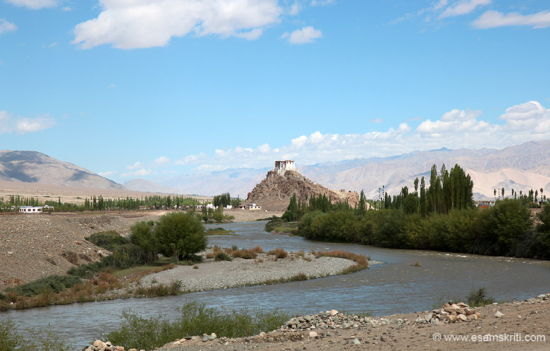 Indus river clicked from Thikse Monastery i.e. 36 kms from Leh.
Indus river clicked from Thikse Monastery i.e. 36 kms from Leh.
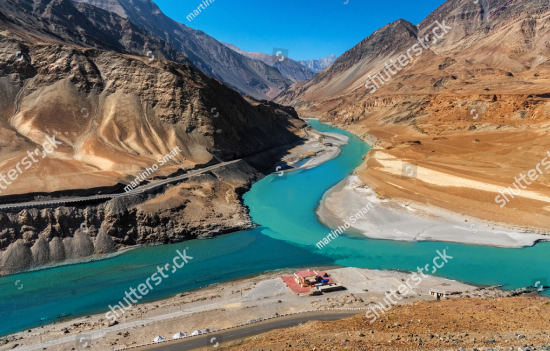 Indus-Zanskar Sangam in Nimu i.e. enroute from Leh to Kargil.
Indus-Zanskar Sangam in Nimu i.e. enroute from Leh to Kargil.
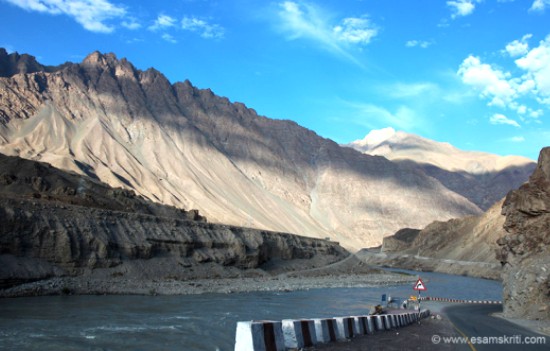 From Nimmu Indus flows towards Kargi. On drive from Leh to Kargil. 2016.
From Nimmu Indus flows towards Kargi. On drive from Leh to Kargil. 2016.
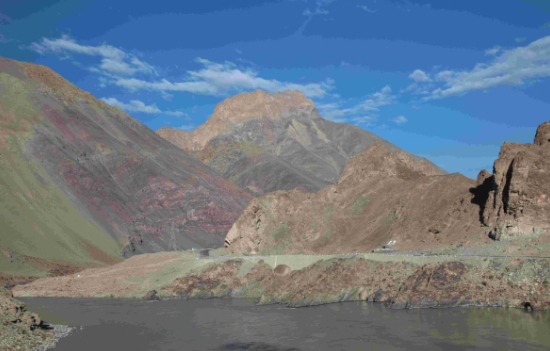 Indus on drive from Leh to Kargil. 2016.
Indus on drive from Leh to Kargil. 2016.
3.
The river goes to Kargil via Batalik.
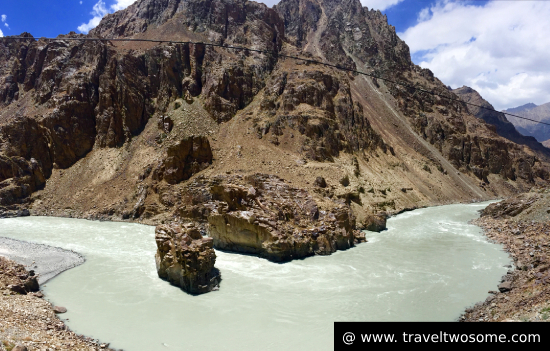 Somewhere on Batalik route. Courtesy reference 2.
Somewhere on Batalik route. Courtesy reference 2.
4.
Slightly head of Kargil, there is a Sangam of the Shingo (flows from Drass) and
Suru rivers, both of which flow to Skardu in Gilgit where they join Indus.
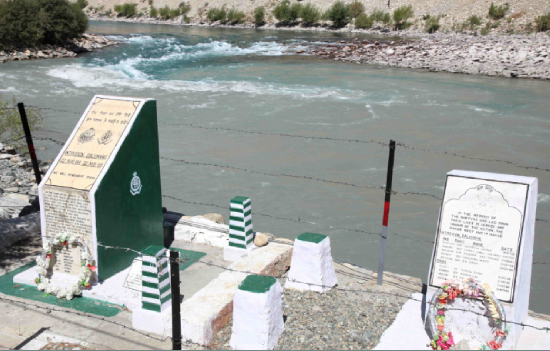 Sangam of Shingo an Suru rivers ahead of Kargil. 2016. Tributes to Harka Bahadur.
Sangam of Shingo an Suru rivers ahead of Kargil. 2016. Tributes to Harka Bahadur. “Skardu, the capital of Gilgit, is only 129 kms from this Indian Army post that is serviced by a dirt-track taking off from Harka Bahadur Bridge, a strategic culvert that Pakistan was so keen to blast during Kargil war but failed. After crossing this post, the road (now in disuse) reaches Gangani, Belargo up to the junction of Suru and Indus rivers at Marol. It further goes along Indus River crossing Bagicha, Tolti, Parkuta, Mehdi Abad and Gol near the junction of Indus and Shyok rivers. From here it goes straight on to Skardu.” Source
5. Skardu is at the Sangam of Indus and Shyok rivers.
6. Near Skardu, the Indus is joined by Shyok River which flows from India. (Shyok in Ladaki means ‘river of death 7)
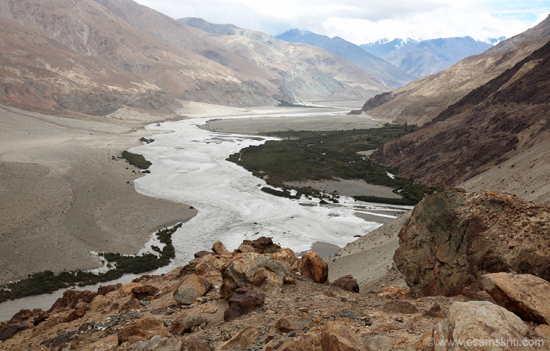 Shyok River in Nubra Valley, Ladakh that
eventually enters Gilgit.
Shyok River in Nubra Valley, Ladakh that
eventually enters Gilgit.
7. “The Gilgit, Gartang, Dras, Shiger, Hunza are the other Himalayan tributaries of the Indus.” Source
8. Chilas is in district Daimer of Gilgit
Baltistan and is on the banks of the Indus.
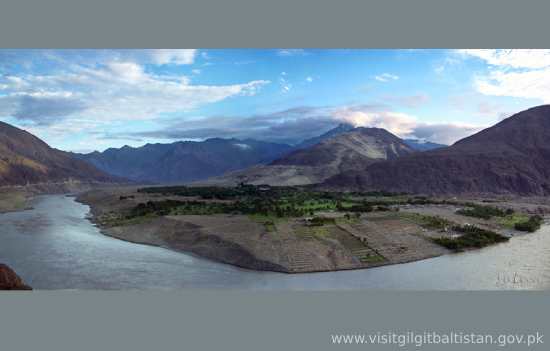 Indus at Chilas.
Indus at Chilas.
11 Map shows water from Kabul River flowing
ending at Attock in Pakistan.
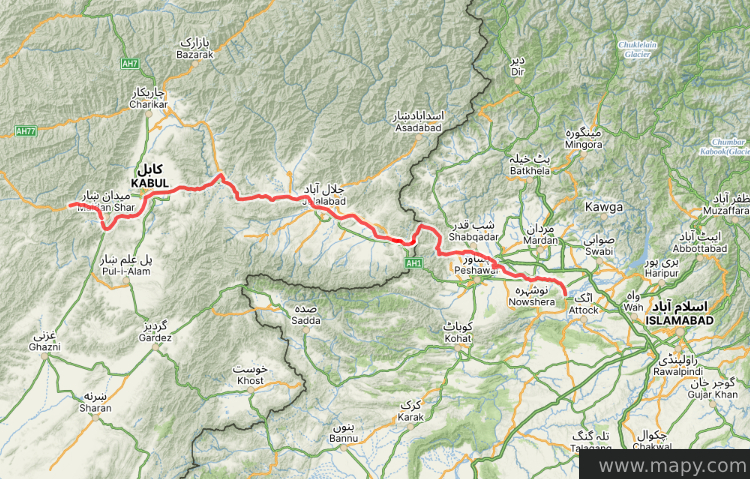 Kabul Rivers flows into Khyber-Paktunwala from Afghanistan and joins the river Indus near Attock.
Kabul Rivers flows into Khyber-Paktunwala from Afghanistan and joins the river Indus near Attock.
“It originates in the Sanglakh Range of the Hindu Kush mountains in Afghanistan and flows eastward, passing by Kabul and Jalalabad before entering Pakistan.” Source
 Map shows Mithankot where Indus merges with 5 rivers flowing from India.
Map shows Mithankot where Indus merges with 5 rivers flowing from India.
10. “Just above Mithankot, the Indus receives from Panjnad (Panchnad), the accumulated waters of the five eastern tributaries—the Jhelum, the Chenab, the Ravi, the Beas and the Satluj.” Source
11. Indus River
eventually empties into the Arabian Sea.
12. Till
before the 1825 Earthquake, the Indus flowed till Lakhpat in Kutch.
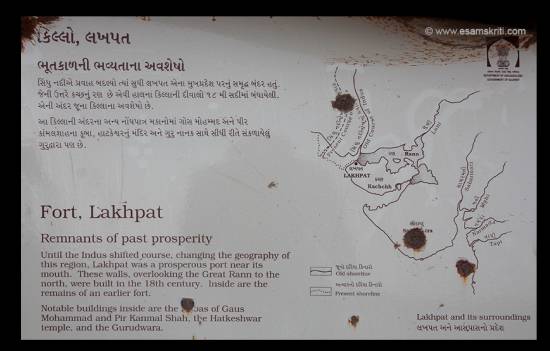 Lakhpat is from where Guru Nanak left to Mecca/Medina.
Lakhpat is from where Guru Nanak left to Mecca/Medina.
In case of
any errors please write back.
Tit-bits
Small hydro-power projects can be developed along the Indus in Ladakh. That needs to be explored
Earlier
could go by road from Kargil (Harka Bahadur Army School) to Skardu.
Former diplomat P Stoban wrote in Tribune Chandigarh India’s Forgotten Land at Mt Kailash, “Few people barely know that India legally owned a territorial estate, Menser, deep inside Tibet at Mt Kailash until the 1960s. The 1842 treaty allowed Gulab Singh to inherit Ladakhi-owned territory in Tibet as his jagír. When Hari Singh signed the Instrument of Accession on October 26, 1947, he referred himself as: ‘Shriman Inder Mahinder Rajrajeswar Maharajadhiraj Shri Hari Singhji, Jammu & Kashmir Naresh Tatha Tibbet adi Deshadhipati’; that he is also the ruler of western Tibet.”
Post August 2019, it needs to be remembered that the Indus River
enters Ladakh and does not pass through the Union Territory of Jammu and
Kashmir.
So also, note that modern day Indian Punjab is no longer the
Land of Five Rivers. Rivers pass through Punjab, do not originate in the state.
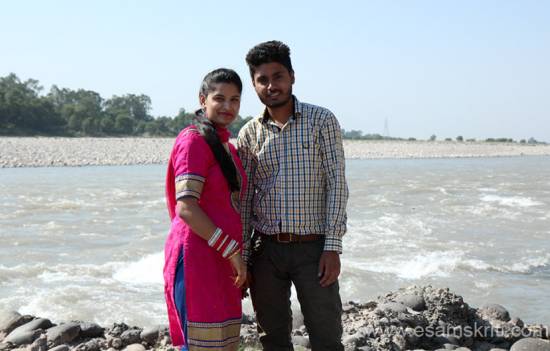 River Chenab at Aknoor in UT of J&K. U see water flowing to Pakistan. 2013.
River Chenab at Aknoor in UT of J&K. U see water flowing to Pakistan. 2013.
India
needs to explore if water from Chenab that flows to Pakistan can be used to
meet needs of Jammu region (plains). Transporting to the hilly areas of Jammu
region and Kashmir Valley might be very expensive and not feasible. If surplus
water exists, it can be transferred to Punjab and Haryana. But first, Punjab
must use surplus waters of Sutlej and Beas which are flowing into Pakistan and
take concrete steps to reduce ground water consumption.
Transferring
the buck will no longer work Punjab.
References
1.
Quiet flows the Indus - good travelogue.
2. A drive along Indus river – good pics.
3.https://www.edubull.com/Content/eRepository/SubjectContent/Notes/3234.pdf
4. Ecological significance of Indus to Ladakh
5. Visit Gilgit/Baltistan
6. Districts of Gilgit/Baltistan very scenic
7.
Sanskriitas.com
8.
Indus river in Ladakh
9.
Britannica.com
All
esamskriti.com pictures clicked by author in 2016.
Also read
1.
Is Punjab the Land of Five Rivers
2.
Why is Baluchistan important for China
3.
TSANGPO Dams - Dangers to India and Bangladesh
4.
Album Lakhpat
5.
Thikse Monastery Album
6. Why Pakistan has put its ambitious canals project on
hold
7. Album Harka Bahadur Army School ahead of Kargil from
where road went to Skardu earlier